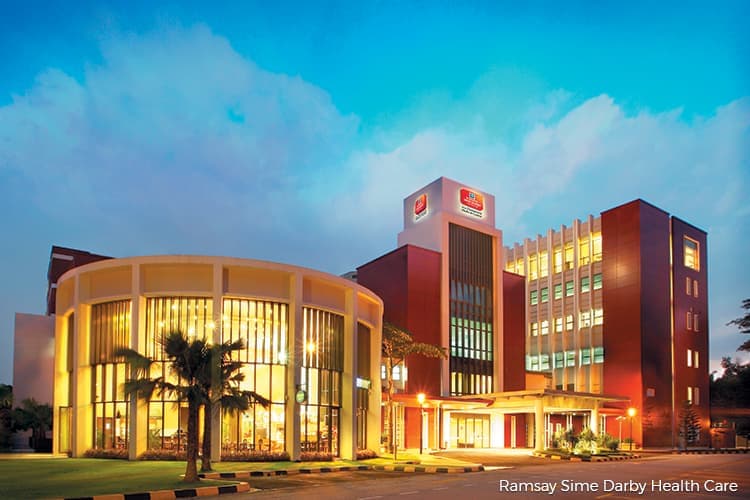
This article first appeared in City & Country, The Edge Malaysia Weekly on November 5, 2018 - November 11, 2018
Winner | Ramsay Sime Darby Health Care Sdn Bhd (50:50 JV between Sime Darby Bhd and Ramsay Health Care)
Ramsay Sime Darby Health Care Sdn Bhd (RSDH) is recognised as a provider of quality private healthcare through its three hospitals, namely Subang Jaya Medical Centre, Ara Damansara Medical Centre and ParkCity Medical Centre. For its pioneering contribution to Malaysia’s property landscape, it has been awarded The Edge Malaysia Pioneer Development Award.
RSDH was formed in 2013 via a joint venture (JV) between Sime Darby Bhd and Ramsay Health Care, one of Australia’s largest private hospital operators. However, the two companies had been operating their respective healthcare businesses for a number of years before that.
When the JV was announced, The Edge reported that Sime Darby said the 50:50 JV would monetise its 50% investment in Sime Darby Healthcare by recognising an estimated net gain on disposal of RM340 million. It added that the JV was part of its strategy to accelerate the growth of its healthcare business.
Apart from the three hospitals in Malaysia, RSDH also has three hospitals in Indonesia.
Subang Jaya Medical Centre, which opened its doors in 1985, is the group’s oldest hospital in Malaysia. It has grown over the years, now offering 395 beds and having seen many clinical and surgical milestones such as the successful performance of open heart surgery, paediatric liver transplants and GIFT (gamete intrafallopian transfers) as well as provision of IVF (in vitro fertilisation) treatments.
The hospital specialises in cancer, blood disease, digestive disorder and liver treatments, among others. To provide a more holistic experience, the 7-storey Mediplex was opened in November 2016, housing hospital facilities and retail outlets.
This holistic experience is also provided at RSDH’s two other hospitals in the country. Ara Damansara Medical Centre was officially opened in March 2012 and offers 220 beds. Its areas of specialty include heart, brain, spine and joint diseases. The lobby of this modern hospital looks like that of a hotel, with plenty of natural light streaming in from the high ceilings.
ParkCity Medical Centre, meanwhile, officially opened in September 2013. It has 300 beds and specialists who focus on children, elderly and women health.
The three hospitals are overseen by a board made up of directors of Sime Darby and Ramsay. Group CEO Gregory Scott Brown, who took up the reins in Malaysia in November last year, plans to take the group to a higher level of growth.
“We have just recruited a merger-and-acquisition manager, who starts on Nov 12. His responsibility will be to acquire other companies or find merger opportunities, but more acquisition than anything else,” says Brown.
“Nothing is discounted, but I believe our plan will become clearer now that we have a dedicated resource — we have someone experienced in acquisitions. We really need to formalise our strategy but at the same time look at acquisitions that fit.
“That is one of the important things when we look at acquiring a business — if it fits the existing business and what value we can add. We usually look at the quality of the facilities, doctors and staff.”
Brown, who has a background in accountancy, has over 40 years of experience in the public and private hospital sectors. Prior to taking the helm at RSDH, he spent 14 years with Ramsay in Sydney, Australia.
“My last role there was as an operations executive manager for the Sydney metropolitan hospitals. I looked after 11 hospitals,” he says. “We have large surgical hospitals there, similar to Subang Jaya [Medical Centre], [with] around 300 beds, operating theatres and so on. We also have dedicated rehabilitation hospitals.”
Brown sees much growth potential in the RSDH hospitals. “We have Ara Damansara, which is growing. We also have the ability to grow our hospital at Desa ParkCity.
“And Subang Jaya, which has been around for 33 years and has a fabulous reputation in the community, and the doctors and the services we provide there are well recognised and respected.
“We are in a good space. I suppose, like a good movie, it is all in the timing. I think I came over at the right time to grow the business and support what we currently do.”
With that in mind, Brown believes a good hospital is only as good as its doctors and staff.
“In Ramsay, we have always said that what is important is the quality of the doctors and the staff. The physical facilities are important but it is the clinical outcome [that is paramount]. If you go to a hospital, you would expect to be well looked after,” he explains.
“My parent’s generation were not too fussy about their care but today, people really compare the quality of the services, preferring single rooms, food of a certain standard and so on.
“We have provided a lot of training to our staff in customer service, and ensured a culture that understands that it is a privilege for patients to choose to obtain treatment at our facilities. We want all our staff to treat our patients as if they are members of their family, so they will really look after them, making sure they feel comfortable and that their expectations are met.”
A comfortable experience
To ensure that the hospital experience is one that promotes healing and a positive mindset, Brown believes design plays an important part.
“A lot of our patients compare our hospitals with a hotel. So, [factors such as] access to the hospital, the car park and ability to drop people off are important. When you walk in, you want it to be stress free,” he says. “They will want to know where to go and where everything is. That first experience is so important. If you get that right, everything just flows from there.”
Brown says it is also essential to understand the different sections of a hospital and their needs. For example, the radiology, pathology and pharmacy departments would require larger waiting areas. Moreover, having good landscaping would ensure that the views from the rooms would be green and pleasant.
“The other thing is making things efficient from a staffing perspective,” says Brown. “For example, you need line-of-sight nursing in the ICU (intensive care unit). If patients are coming in for a day procedure, you would need good facilities, so that they would be well accommodated.”
Additionally, learning from others and getting feedback from patients are helpful in designing a good hospital.
“Because we have other hospitals and businesses around the world, we look at what is the best practice,” says Brown. “Meanwhile, patient feedback keeps us informed of what we can do better. The design must fit the purpose of the hospital and the type of patients you will have.”
New ways to help others
RSDH uses technology in the provision of good service. For instance, medication can now be delivered to patients, which reduces waiting time at the hospital, and patients can make appointments with their doctors via WhatsApp. There is also a live chat function on the group’s website that is mobile-friendly, allowing patients or the public to make enquiries.
Brown sees robots playing a big part in the clinical outcomes of patients.
“Right now, we have a robot for intraoperative radiation therapy. What it does is, if a lump that has been removed from the breast is found to be cancerous, the robot would be able to give a targeted burst of radiation directly to the cancerous area [of the body]. We have had this robot at Subang Jaya Medical Centre for 12 months and the results have been good,” he says, adding that the group is considering acquiring a Da Vinci robot for prostate removal.
Technology also comes in handy in managing patients’ medical records. The records of the three hospitals are being managed by the Hospital Management & Information System, which synchronises the data so that no matter which hospital a patient visits, the doctors would be able to access his or her record using their computers.
Brown believes that one day, doctors will be able to access the records from home using a tablet or computer before coming to the hospital.
“Both Ramsay and Sime Darby are committed to good clinical outcomes. If you focus on that, you will usually get the front-end right. When we look at buying equipment or introducing new procedures or practices, we always ask ourselves first if they will benefit our patients.”
The group’s doctors who attend conferences abroad also share new ideas and technology with the management.
At present, there are no plans to build new hospitals but Brown says he may explore smaller, more mobile options.
“One of the areas we are considering is satellite outpatient clinics and day surgery in areas that complement our existing facilities. Day surgery is a growing area and I see it as one of our growing markets — to be able to provide good day surgery facilities to our patients, be it at our hospitals or in standalone facilities.”
Save by subscribing to us for your print and/or digital copy.
P/S: The Edge is also available on Apple's AppStore and Androids' Google Play.





